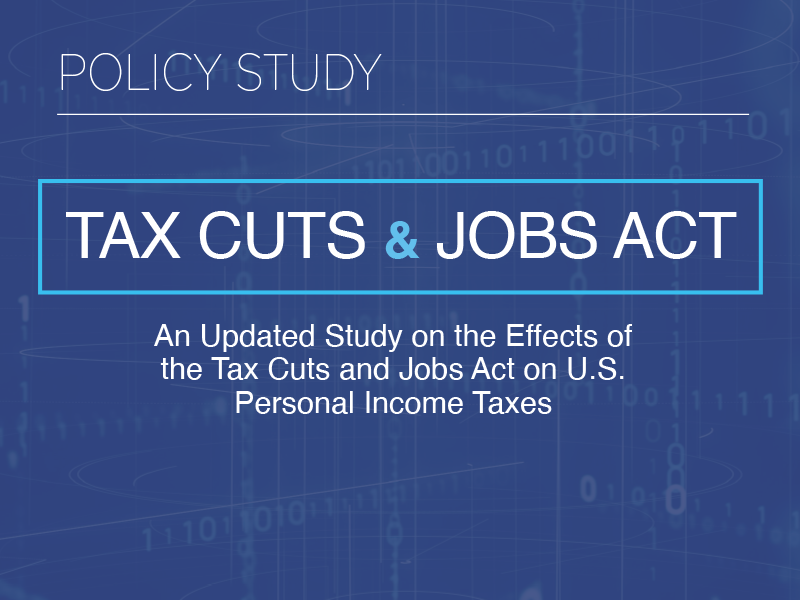Key Takeaways
- Data from the IRS measuring income tax revenues collected from 2017 to 2022 show the Tax Cuts and Jobs Act (TCJA) reduced the average amount of personal income taxes paid by filers in every income bracket, with the largest benefits going to lower- and middle-income households.
- We estimate that tens of millions of working class and middle-income filers have enjoyed a total tax savings of least $6,000 since 2018 because of the TCJA law, although most f ilers earning at least $75,000 annually have saved substantially more.
- Based on IRS data, we estimate that from 2018 to 2024, the total average amount saved by filers in the “$50,000 under $75,000” income bracket was more than $6,300.
- Filers in the “$75,000 under $100,000” income bracket saved $8,300 from 2018 to 2024.
- We estimate filers in the “$100,000 under $200,000” bracket saved nearly $13,500 in total from 2018 to 2024.
- If Congress fails to extend the personal income tax cuts included in the TCJA, many working class and middle-income filers will pay thousands in additional taxes over the next five years.
Introduction
In 2017, President Donald Trump and a Republican controlled Congress successfully enacted the Tax Cuts and Jobs Act (TCJA) into law. (The majority of its provisions took effect in 2018.)
According to the nonpartisan Tax Foundation, the Tax Cuts and Jobs Act “reform[ed] the individual income tax code by lowering tax rates on wages, investment, and business income.” It also “broaden[ed] the tax base,” simplified the tax code, reduced the corporate income tax rate to 21 percent, and “mov[ed] the United States from a worldwide to a territorial system of taxation.”
The personal income tax rate cuts included in the TCJA are set to expire on December 31, 2025. Congress is now considering whether to extend the TCJA’s personal income tax cuts.
In the years since the law has been in place, critics of the legislation have continued to falsely assert that the TCJA has disproportionately advantaged millionaires and billionaires, while increasing the burden on middle- and lower-income families. This is simply not true. In fact, the TCJA has had the opposite effect, as the data included in this paper shows.
In 2021, The Heartland Institute published an analysis of the Tax Cuts and Jobs Act that measured the impact the tax law had on personal income taxes. As we noted in that paper, IRS data for 2018—the first year the tax law went into effect— definitively shows that “the Tax Cuts and Jobs Act reduced average effective income tax rates for filers in every one of the IRS’s income brackets, with the largest benefits going to lower- and middle-income households.”
This paper provides updated data and analysis of the TCJA. Relying on tax data from the 2018–23 filing years, which captures taxes collected from 2017 through the end of 2022, this analysis reveals that the benefits of the TCJA for lower- and middle income households discovered in our original study continued through the end of 2022. (Unfortunately, tax data for 2023 is not yet available.)
We also estimate that tens of millions of working class and middle-income filers have enjoyed a total tax savings of least $6,000 since 2018 because of the TCJA law, although most filers earning at least $75,000 annually have saved substantially more.






